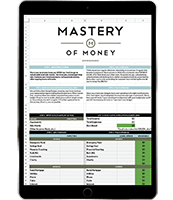This post is all about an amazing and free tool called Personal Capital, an online and easy-to-use financial software that serves as a balance sheet and net worth statement tracker.
Have you ever found yourself saying the following?
- I’m not actually sure how much money I have
- I have too many accounts
- I wish it were easier to track my expenses and account balances
- I wish I could have an easy way to see all of my finances
- It’s such a hassle to log in to multiple websites to check my finances, so it’s easier not to
- Ah shoot, what’s my password again?
If you have, don’t worry, you’re not alone. In working with thousands of people ranging from college students, young professionals, Olympic athletes, celebrities, and entrepreneurs, the statements above are more common than you may think.
When it comes to managing your finances, the first step in doing it effectively is to first know where you stand– in other words, know how much you HAVE and how much you OWE. What I’m talking about is your Net Worth, which can be found on a Balance Sheet.
Below, I’m going to highlight how I personally use Personal Capital as well as the benefits that both I and my clients who use it experience. And in case you were wondering, creating an account with Personal Capital is one of the first action items I have my clients take when working with me.
So let’s begin!
HOW TO USE PERSONAL CAPITAL IN 3 EASY STEPS
Step 1: Download the app by typing in Personal Capital or open the website at www.personalcapital.com and create an account with a simple login and password– signing up requires an email, a password and phone number (for verification purposes).
Step 2: Personal Capital will then prompt you to connect all of your external financial accounts– these could include the following:
- Checking & Savings
- Fun Accounts
- PayPal
- Venmo
- IRAs/Rollover IRAs
- 401(k)’s/403(b)’s
- Mortgages
- Student Loans
- Car Loans
- Personal Loans
- Credit Cards
- Other Investments
Now, before you do this, you will need to have your logins and passwords for the financial institutions you’re connecting to get this complete. As an aside, I’ve had clients have massive financial breakthroughs simply from this step alone for a couple of reasons– whether that’s getting present to the large quantity of different accounts they have, or finding accounts they had forgotten about, or actually seeing all of the accounts they have in place, and my favorite, being surprised by the actual balances in the accounts. One client of mine in Chicago was pleased to find that her student loan balance was $70k LESS than she had thought it was in her mind.
So, it goes without saying that connecting all of your accounts is a huge step in the right direction towards managing your finances. In fact, the biggest complaint for most people when it comes to money is that it’s too difficult to manage because they have too many accounts at different financial institutions– think student loans on one website, checking and savings on another website, credit cards on another; and don’t forget mortgages, Venmo, PayPal, investments, 401(k)s, rollover IRAs, the list goes on and on. By completing Step 2, you are able to side step this issue like a bo$$.
If you were anything like me, you may have had a question pop up before you connected your accounts: Is it safe and secure to link my accounts?
Taken directly from the website, Personal Capital promises:
“Our highest priority is keeping your financial data safe and secure.
We use multiple layers of security, in every component of our systems,
to keep your accounts and your money safe, and your information private.”
Having done more research myself, I found that Personal Capital uses the same level of encryption as the largest banks in the world. More importantly, what I tell clients who are still uncertain about linking their information is the following– even if someone were to find out your login information, they wouldn’t be able to do anything with the accounts (withdraw money, transfer balances, sell stock positions, etc.) because Personal Capital’s dashboard is simply for display purposes. No action can be taken from the software.
I must say that if you have over $100,000 in savings/investments, you will most likely receive a call from a Personal Capital representative who will want to share about their higher, and paid, levels of service, primarily managing your investments. It’s up to you whether or not you want to do that. I’ve had some clients do that and others who don’t. Speak to a financial advisor, coach, or planner before making any choices. Or, respond and comment below in the article and someone from our team will reach out to you to better assist you.
Step 3: Now that you have a real-time view of your Net Worth, Assets, and Liabilities, we can start using the information it is displaying to make some important decisions. Before I move on, I must say that regardless of whether or not your Net Worth is positive, negative, or exactly at zero, don’t worry. Getting present to the reality of your financial situation is the first step in being able to improve it.
I had a client who just finished dental school and his Net Worth was -$385,246. Needless to say, despite where he started, tracking and using Personal Capital has given him the confidence to continue paying off debt when he can see his student loan balances go down and his Net Worth increase.
Our recommendation is that you check Personal Capital at most, once a week and at minimum, once a month. There’s a couple reasons for this– checking your Net Worth can get addicting and can end up causing the reverse effect we want it to have, which is to empower you.
Remember, building wealth takes time and change will not happen immediately. So whether that’s increasing your income, paying off debt, and eliminating credit card interest, give yourself time and more importantly, space and compassion, to be on this journey. Checking Personal Capital too often could potentially cause anxiousness since you’re too busy seeing the minor fluctuations in Net Worth and not focused on the bigger picture. It’s a marathon, not a sprint!
On the flip side, we want to ensure you’re checking your Personal Capital Net Worth at least once a month so you can track your progress over time.
A healthy balance and practice would be to check it once a week, at least for the beginning.
How I do this easily is by saving the URL as a tab on my computer and having it available on my phone as an app. What’s nice about that is that at any time, I can get a complete picture of my Net Worth on any device.
Now that you know how frequently to check Personal Capital, what should you be looking for when you check the accounts?
WHAT DO YOU LOOK FOR?
Data is useless unless interpreted and implemented. So, for starters, we want to make sure that your Net Worth number is increasing month to month, quarter to quarter, and year to year. This communicates that your Net Worth is growing and you’re taking the right actions in saving money and paying off any debt you may have.
Tracking your Net Worth to ensure its growth is akin to weighing yourself on the scale when you’re trying to lose weight, or measuring your biceps if you’re trying to bulk up. There is a healthy balance and requirement to make sure you keep your eye on the prize and goals. Data shows that by tracking your progress, you are more likely to reach your goals. Furthermore, setting incentives for yourself and incorporating accountability with someone else show to increase success by 95%!
In case you were wondering, that is exactly why I have my clients not only sign up with Personal Capital, but also share it with me before every call we have.
Golf clap for accountability’s sake!
So let’s walk through an example:
On this sample dashboard, you’ll notice a couple of things, but I want to direct your attention to the dark blue column on the left-hand side. What I’m looking at is the sample Net Worth in the top left hand corner. It clearly states in this example that it is $1,364,876. Now, of that Net Worth, it breaks it down into Assets and Liabilities directly beneath the number.
In this case, the Assets are comprised of Cash (two accounts at Wells Fargo) and Investments (four accounts that are at different places such as an IRA, 401(k), another 401(k), and stock options). Then it shows Credit, which is a liability. ***Pro tip, the number is negative so it means it’s a liability. Here, the credit consists of two credit cards, one at American Express and another at Citibank.
What I look for is that the Assets (cash, investments) are increasing on a month to month basis and the Liabilities (credit cards, student loans, car loans, mortgage, etc.) are decreasing on a month to month basis. If it’s doing that, then my Net Worth is increasing, which is great! If it is decreasing, it’s an opportunity for me to look at what’s going on– perhaps I had special events, or had friends/family visit from out of town that had me spend more, or emergencies that came up. Whatever it is, I can dig deeper and be insightfully straight with myself and my financial decisions because this data tell me something needs to be examined.
In the center/right side of the screen, you’ll this screenshot captures the Retirement Planner feature, which is also included in the free version of Personal Capital. This will show a very basic view of your future cash flow situation based on current spending, saving, and income. We will provide a more in depth analysis on this in future posts.
SO WHAT HAVE YOUR CLIENTS GOTTEN OUT OF USING PERSONAL CAPITAL?
The biggest thing my clients have gotten from using Personal Capital is having the awareness to how much they actually have in assets, investments, and liabilities. Some were surprised to see that their net worth was positive! Some thought it’d be more negative than it actually was. And the ones who went from negative to positive by saving more money and paying off debt over the course of a 3 month coaching program were over the moon with joy.
Ultimately, with awareness and clarity came confidence and certainty by knowing where they stood financially. A favorite management quote of mine goes like this, “What you can see, you can move. And what you can move, you can manage.”
SO WHAT’S NEXT?
This article was about the Net Worth tracking tool. In upcoming articles, we’ll expand more on the planning, investment, and budgeting aspects of the website and service.
When it comes to managing your finances, the first step in doing it effectively is to first know where you stand, or in other words, know how much you HAVE and how much you OWE.
From there, the world is your oyster.
Overall, Personal Capital is a great, free tool that allows you to have peace of mind knowing where your money is and where you stand financially with a single login. Sign up using this link HERE, because, why not? Thanks for reading and hope you enjoy!
Was hoping to hit $130k net worth in Jan and it didn’t happen.
BUT TODAY. IT HAPPENED. 🥳🥂 pic.twitter.com/xDcWznuAeq
— Simplistic Steph (@Simplstic_Steph) March 1, 2019





